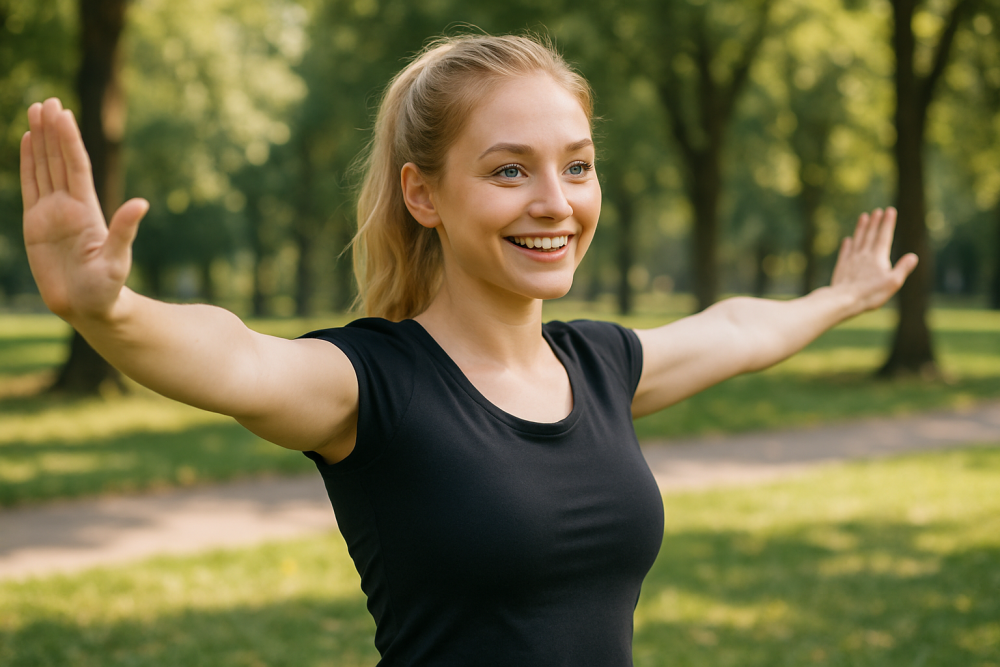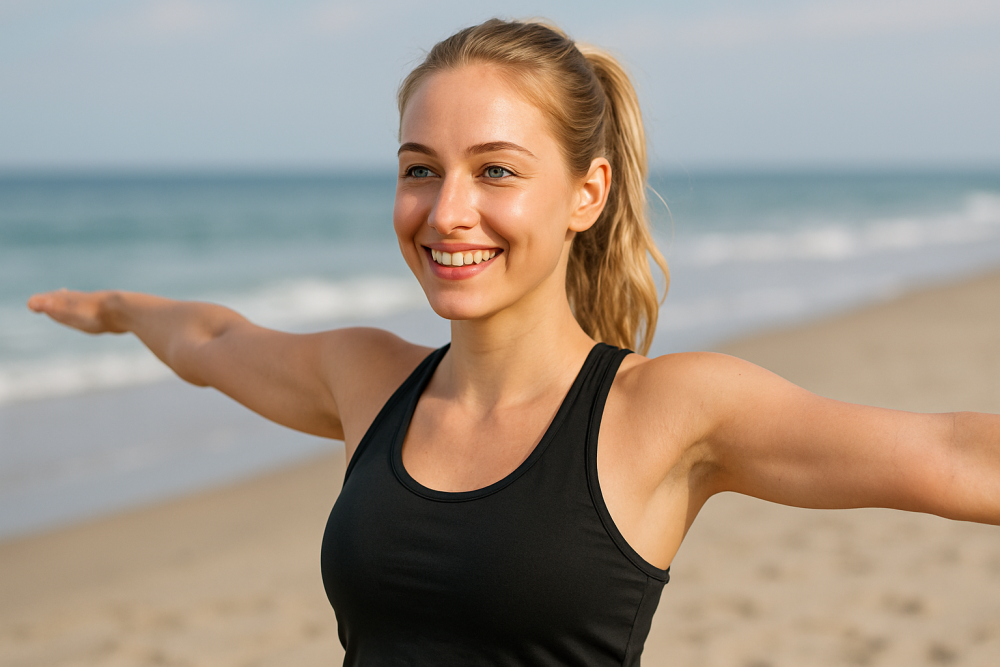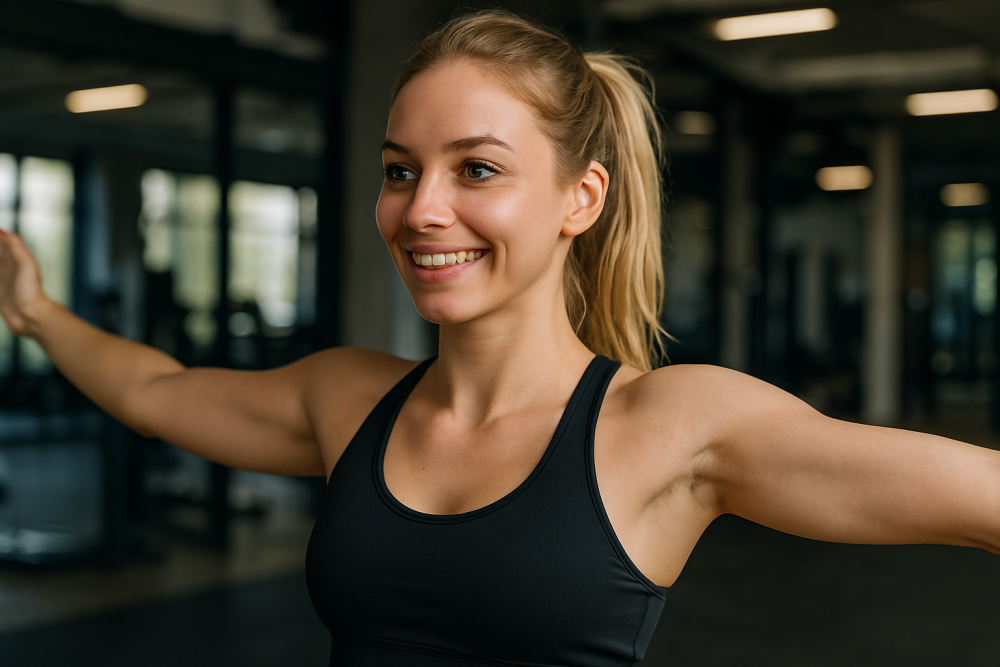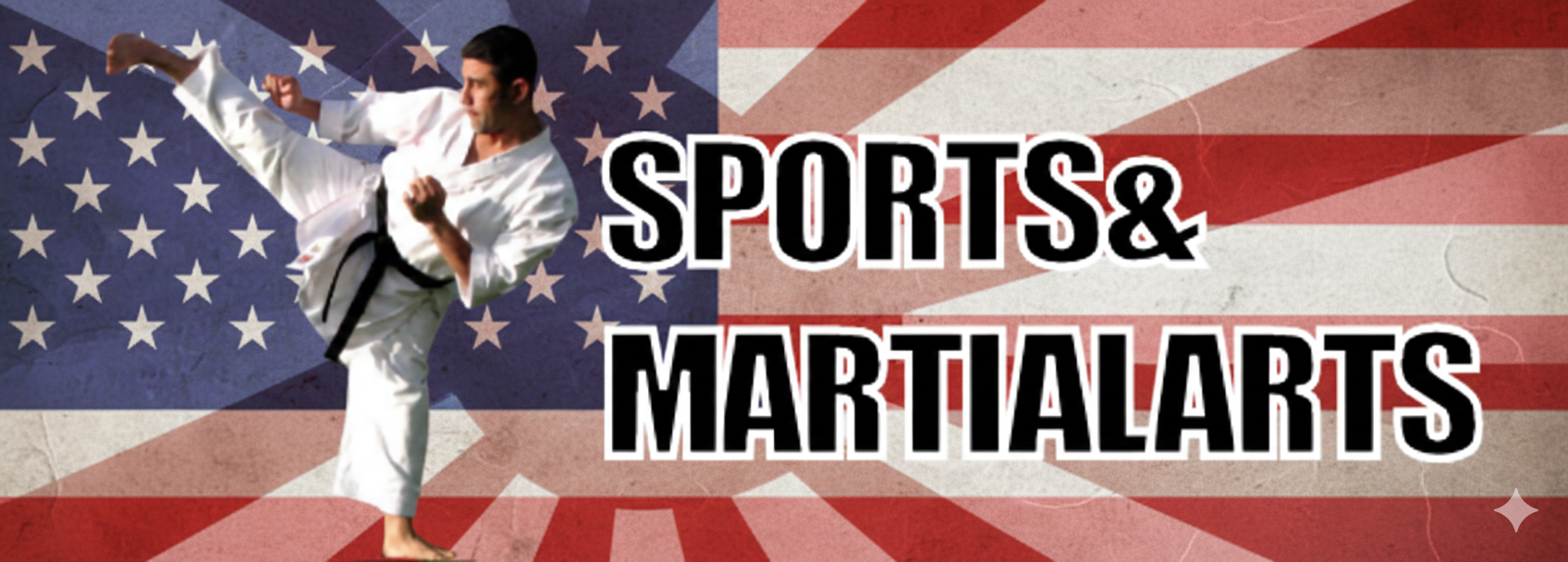Contents
Arm Circles Stretching Exercise
A Simple Move with Powerful Benefits
The Arm Circles Stretching Exercise is one of the simplest yet most effective dynamic warm-up moves you can do. It’s a favorite among athletes, martial artists, fitness enthusiasts, and anyone looking to loosen up their upper body before a workout or physical activity. Though it looks easy, arm circles activate multiple muscle groups, improve shoulder mobility, and help prevent injury.

Benefits of Arm Circles
- Boosts Shoulder Mobility and Flexibility: Arm circles are a simple yet powerful way to increase the range of motion in your shoulder joints. This is especially beneficial for anyone involved in activities like weightlifting, swimming, throwing, or martial arts, where shoulder flexibility and control are essential.
- Excellent Warm-Up for the Upper Body: Performing arm circles activates multiple upper body muscle groups—including the deltoids, chest, upper back, and arms. It prepares your muscles and joints for more intense movements, making it an ideal dynamic warm-up before workouts, sports, or martial arts practice.
- Enhances Blood Circulation and Muscle Readiness: This movement gets your blood flowing and oxygenates the muscles, which can help improve performance and reduce the chances of cramping or stiffness. It also increases joint lubrication, making movement smoother and more efficient.
- Lowers the Risk of Injury: By gently mobilizing and stretching the shoulder joints, arm circles help reduce the risk of shoulder strains, rotator cuff injuries, and overuse problems. This is especially important for people who perform frequent overhead or repetitive upper body movements.
- Supports Better Posture and Shoulder Stability: Arm circles engage the shoulder stabilizers and upper back muscles, which play a key role in maintaining upright posture. Regular practice can help correct slouched or rounded shoulders caused by long periods of sitting or screen time.
Recommended Sets and Duration
Beginners: 2 sets of 10–15 seconds in each direction (forward and backward)
Intermediate/Advanced: 2–3 sets of 20–30 seconds each direction
Reps Alternative: 10–20 slow, controlled circles per direction
You can include arm circles in your warm-up routine, between sets for mobility resets, or even during a cooldown session.

Step-by-Step Guide to Arm Circles
- Starting Position
Stand tall with your feet shoulder-width apart. Extend both arms straight out to your sides at shoulder level. - Small Forward Circles
Begin making small forward circles with your arms, keeping them parallel to the ground. Control the movement — don’t rush. - Increase Circle Size
Gradually increase the size of the circles after a few seconds. This helps stretch deeper into the shoulder joint and upper back. - Reverse Direction
After 10–15 seconds (or 10–20 circles), reverse the direction and start making backward circles. Start small and build up again. - Breathe Normally
Maintain a steady breath throughout the exercise. Stay relaxed but keep your core slightly engaged. - Finish & Shake Out
Once completed, lower your arms and shake them out to release any tension.

Variations of Arm Circles
- Single-Arm Circles: Useful for isolating one side, especially if you have an imbalance or recovering from an injury.
- With Light Weights: Hold 1-2 lb dumbbells or wrist weights for increased resistance and muscle activation.
- Seated Arm Circles: Ideal for seniors or people with mobility restrictions. Sit upright in a chair and perform the same movement.
- Speed Circles: Perform faster circles for cardio warm-up — great before HIIT or martial arts practice.
- Wall Arm Circles: Stand with your back against a wall for a stricter form that emphasizes shoulder mobility and posture control.

Tips and Recommendations
Stay Controlled: Don’t swing your arms wildly. Controlled motion ensures you’re working the muscles safely and effectively.
Avoid Shrugging Shoulders: Keep your shoulders relaxed and down to prevent neck tension.
Stay Consistent: Add this to your daily routine for better shoulder health — especially if you work at a desk or lift regularly.
Listen to Your Body: If you feel pain (not to be confused with mild muscle activation), stop and reassess your form.
Final Thoughts
The Arm Circles Stretching Exercise may be old-school, but it’s a timeless tool for joint mobility, posture improvement, and injury prevention. Whether you’re gearing up for a workout or loosening up tight shoulders from a long day at the desk, arm circles are quick, effective, and accessible to everyone.
Recommended for you:
Go Back to The Exercise Enciclopedia
Follow our Social Media!












